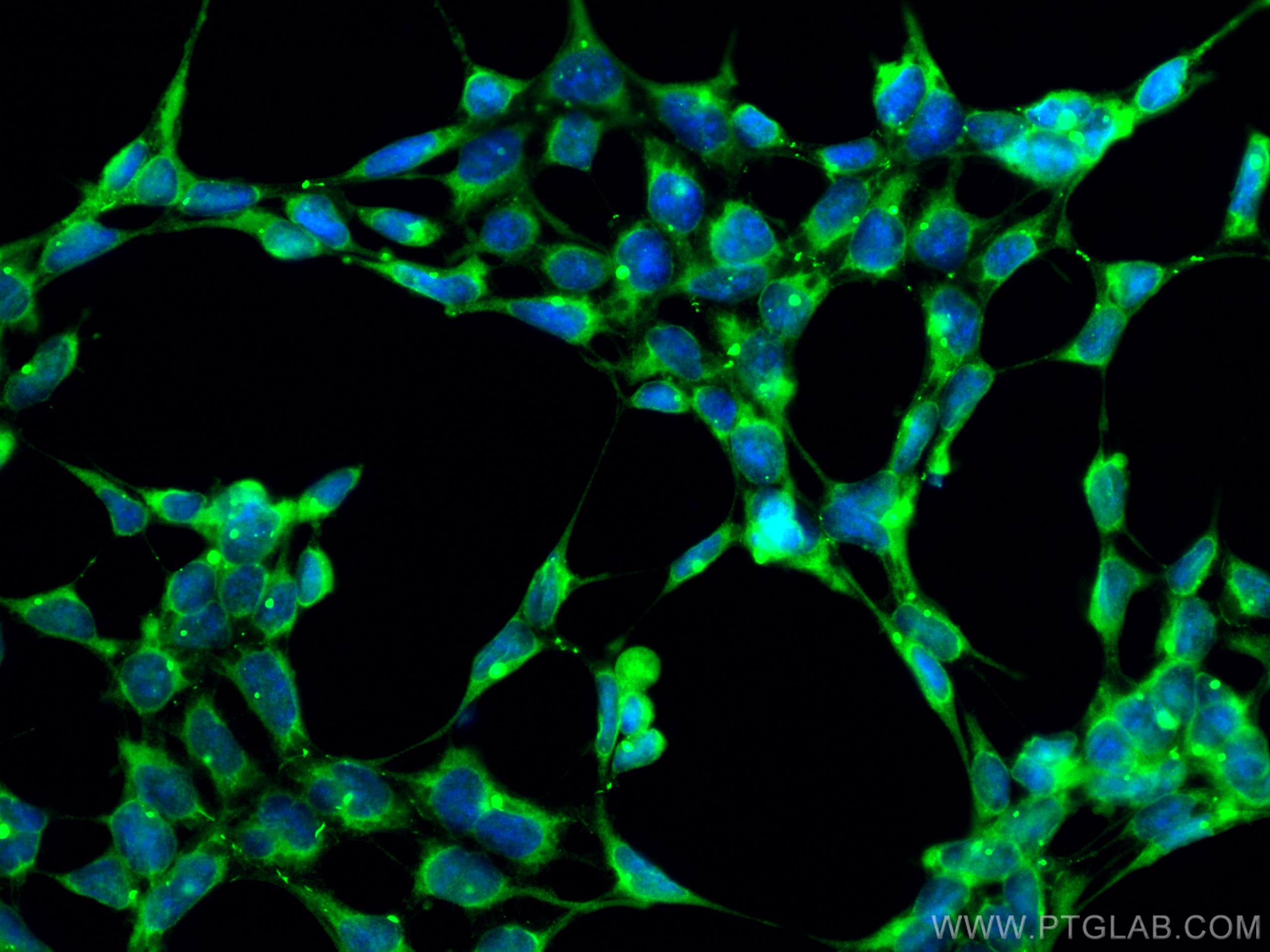- Phare
- Validé par KD/KO
Anticorps Monoclonal anti-CDR2L
CDR2L Monoclonal Antibody for IF/ICC
Hôte / Isotype
Mouse / IgG1
Réactivité testée
Humain, rat, souris
Applications
IF/ICC
Conjugaison
CoraLite® Plus 488 Fluorescent Dye
CloneNo.
2E12D10
N° de cat : CL488-66791
Synonymes
Galerie de données de validation
Applications testées
| Résultats positifs en IF/ICC | cellules HEK-293, |
Dilution recommandée
| Application | Dilution |
|---|---|
| Immunofluorescence (IF)/ICC | IF/ICC : 1:50-1:500 |
| It is recommended that this reagent should be titrated in each testing system to obtain optimal results. | |
| Sample-dependent, check data in validation data gallery | |
Informations sur le produit
CL488-66791 cible CDR2L dans les applications de IF/ICC et montre une réactivité avec des échantillons Humain, rat, souris
| Réactivité | Humain, rat, souris |
| Hôte / Isotype | Mouse / IgG1 |
| Clonalité | Monoclonal |
| Type | Anticorps |
| Immunogène | CDR2L Protéine recombinante Ag6139 |
| Nom complet | cerebellar degeneration-related protein 2-like |
| Masse moléculaire calculée | 53 kDa |
| Poids moléculaire observé | 54 kDa |
| Numéro d’acquisition GenBank | BC047534 |
| Symbole du gène | CDR2L |
| Identification du gène (NCBI) | 30850 |
| Conjugaison | CoraLite® Plus 488 Fluorescent Dye |
| Excitation/Emission maxima wavelengths | 493 nm / 522 nm |
| Forme | Liquide |
| Méthode de purification | Purification par protéine G |
| Tampon de stockage | PBS with 50% glycerol, 0.05% Proclin300, 0.5% BSA |
| Conditions de stockage | Stocker à -20 °C. Éviter toute exposition à la lumière. Stable pendant un an après l'expédition. L'aliquotage n'est pas nécessaire pour le stockage à -20oC Les 20ul contiennent 0,1% de BSA. |
Informations générales
Cerebellar degeneration-related protein 2-like(CDR2L), also named as HUMPPA or Paraneoplastic 62 kDa antigen, is a 465 amino acid protein, which belongs to the CDR2 family. CDR2L contains three potential coiled-coil regions. The functions of protein is so far not known. CDR2L is expressed in the brain and localizes in the cytoplasm.
Protocole
| Product Specific Protocols | |
|---|---|
| IF protocol for CL Plus 488 CDR2L antibody CL488-66791 | Download protocol |
| Standard Protocols | |
|---|---|
| Click here to view our Standard Protocols |


